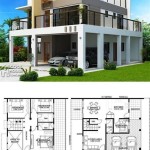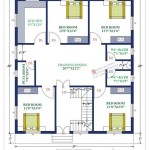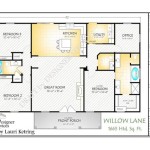Small Coastal House Plans are architectural designs specifically tailored for modest-sized homes situated in coastal areas. These plans incorporate unique features to address the specific challenges and take advantage of the opportunities presented by coastal living. From compact layouts to durable materials and energy-efficient designs, small coastal house plans prioritize functionality and resilience while maximizing comfort and livability.
Coastal living offers both proximity to stunning landscapes and potential challenges, such as storms and flooding. Small coastal house plans are designed with these factors in mind, employing sustainable materials that can withstand harsh weather conditions and carefully planned layouts that minimize vulnerability to natural disasters. By adhering to specific building codes and regulations, these plans ensure the safety and longevity of coastal homes.
In the following sections, we will explore the key elements of small coastal house plans, including design considerations, sustainable practices, and innovative solutions for maximizing space and functionality in a compact setting.
When designing small coastal house plans, certain key points should be considered to ensure functionality, durability, and sustainability in the unique coastal environment.
- Elevated foundations
- Impact-resistant windows
- Durable roofing materials
- Energy-efficient appliances
- Open floor plans
- Multipurpose spaces
- Natural lighting
- Outdoor living areas
- Sustainable materials
By incorporating these elements into the design, small coastal house plans can create comfortable, resilient, and eco-conscious living spaces that embrace the coastal lifestyle.
Elevated foundations
In coastal areas, elevated foundations are a crucial aspect of small coastal house plans. By raising the house above the ground level, these foundations provide several key benefits:
- Protection from flooding: Elevated foundations elevate the living space above potential floodwaters, reducing the risk of damage to the home and its contents. This is especially important in areas prone to hurricanes, storm surges, or other flooding events.
- Improved drainage: Elevating the house allows for better drainage of rainwater and groundwater, preventing moisture from accumulating around the foundation and causing structural damage or mold growth.
- Enhanced ventilation: The space beneath an elevated house promotes air circulation, which helps prevent moisture buildup and improves indoor air quality.
- Increased natural light: Elevating the house allows for larger windows and openings on the lower levels, maximizing natural light and creating a brighter and more spacious living environment.
Building codes in coastal areas often specify minimum foundation heights to ensure adequate protection from flooding and other hazards. By incorporating elevated foundations into their designs, small coastal house plans adhere to these regulations and provide a safe and resilient living space for coastal homeowners.
Impact-resistant windows
Impact-resistant windows are a crucial component of small coastal house plans, providing essential protection against the unique challenges of coastal living. These windows are designed to withstand high winds, windborne debris, and even hurricanes, ensuring the safety and well-being of coastal homeowners.
Unlike ordinary windows, which can shatter upon impact, impact-resistant windows are made with laminated glass or reinforced with a protective film. This special glazing helps to absorb and disperse the force of impact, preventing the glass from breaking and creating dangerous shards.
In addition to their safety benefits, impact-resistant windows also offer several other advantages for small coastal house plans:
- Improved energy efficiency: Impact-resistant windows are often double- or triple-glazed, which helps to reduce heat loss and gain, resulting in lower energy bills and a more comfortable indoor environment.
- Reduced noise pollution: The thick glass and tight seals of impact-resistant windows effectively block out unwanted noise from outside, creating a quieter and more peaceful living space.
- Increased durability: Impact-resistant windows are built to last, withstanding not only storms but also everyday wear and tear. This durability reduces the need for costly repairs and replacements.
By incorporating impact-resistant windows into their designs, small coastal house plans provide homeowners with a safe, comfortable, and energy-efficient living space that can withstand the challenges of coastal living.
Durable roofing materials
Durable roofing materials are essential for small coastal house plans, as they provide protection from the harsh elements that come with coastal living. These materials must be able to withstand strong winds, heavy rains, and salty air, which can quickly deteriorate ordinary roofing materials.
- Metal roofing: Metal roofing is a popular choice for coastal homes due to its durability and longevity. It is resistant to rust, corrosion, and high winds, and can withstand even the strongest hurricanes. Metal roofing is also relatively lightweight, making it easy to install and transport.
- Slate roofing: Slate roofing is another durable option for coastal homes. Slate is a natural stone that is extremely strong and weather-resistant. It is impervious to water, fire, and insects, and can last for over a century with proper maintenance.
- Tile roofing: Tile roofing is a beautiful and durable option for coastal homes. Tiles are made from fired clay or concrete, and are resistant to fire, water, and high winds. Tile roofing is also relatively low-maintenance, and can last for many years with minimal upkeep.
- Asphalt shingles: Asphalt shingles are a more affordable option for coastal homes, but they are not as durable as metal, slate, or tile roofing. However, asphalt shingles are still a good choice for homes in less severe coastal environments.
By incorporating durable roofing materials into their designs, small coastal house plans ensure that coastal homeowners have a roof that will protect their homes from the elements for many years to come.
Energy-efficient appliances
Incorporating energy-efficient appliances into small coastal house plans is crucial for reducing energy consumption and creating a more sustainable living environment. Energy-efficient appliances use less energy to perform the same tasks as traditional appliances, resulting in lower utility bills and a reduced carbon footprint.
When choosing energy-efficient appliances for small coastal house plans, there are several key factors to consider:
- Energy Star rating: The Energy Star label is a government-backed certification that indicates that an appliance meets strict energy efficiency standards. Look for the Energy Star label when purchasing appliances to ensure that you are choosing the most energy-efficient models.
- Appliance size: The size of an appliance can impact its energy consumption. Choose appliances that are appropriately sized for your needs to avoid wasting energy.
- Usage patterns: Consider how often you will use an appliance and choose models that have energy-saving features, such as sleep mode or automatic shut-off.
Some specific examples of energy-efficient appliances that are well-suited for small coastal house plans include:
- Refrigerators: Energy-efficient refrigerators use advanced insulation and compressor technologies to reduce energy consumption. Look for models with an Energy Star rating and a large freezer compartment to accommodate bulk purchases and reduce the need for multiple trips to the grocery store.
- Dishwashers: Energy-efficient dishwashers use less water and energy to clean dishes. Choose models with an Energy Star rating and features such as a soil sensor, which adjusts the wash cycle based on the soil level of the dishes.
- Washing machines: Energy-efficient washing machines use less water and energy to wash clothes. Choose models with an Energy Star rating and features such as a high-efficiency spin cycle, which removes more water from clothes, reducing the drying time and energy consumption.
- Dryers: Energy-efficient dryers use less energy to dry clothes. Choose models with an Energy Star rating and features such as a moisture sensor, which automatically shuts off the dryer when clothes are dry.
By incorporating energy-efficient appliances into their designs, small coastal house plans can help homeowners reduce their energy consumption, save money on utility bills, and contribute to a more sustainable living environment.
Open floor plans
Open floor plans are a popular design choice for small coastal house plans, as they create a sense of spaciousness and allow for a more flexible use of space.
- Increased natural light: Open floor plans allow for more natural light to penetrate the home, creating a brighter and more inviting living environment. This is especially important in coastal areas, where natural light can be limited due to overcast skies or dense vegetation.
- Improved ventilation: Open floor plans promote better air circulation throughout the home, reducing the risk of moisture buildup and mold growth. This is especially important in humid coastal environments, where proper ventilation is essential for maintaining a healthy indoor environment.
- Enhanced sense of space: Open floor plans create a more spacious and airy feeling, even in small homes. By removing walls and barriers, these plans make the most of the available space and create a more livable environment.
- Flexibility and adaptability: Open floor plans allow for greater flexibility in furniture placement and room arrangement. This makes it easier to adapt the space to changing needs and lifestyles, such as accommodating guests or creating a home office.
By incorporating open floor plans into their designs, small coastal house plans create comfortable and inviting living spaces that take advantage of natural light, ventilation, and space.
Multipurpose spaces
Multipurpose spaces are an essential feature of small coastal house plans, as they allow homeowners to maximize the functionality and space efficiency of their homes. By combining different functions into a single room, multipurpose spaces create flexible and adaptable living areas that can accommodate a variety of needs.
- Home office/guest room: A multipurpose room can easily be converted into a home office or guest room by adding a desk, chair, and bed. This is a great option for small homes where there is not enough space for a dedicated office or guest room.
- Playroom/storage room: A multipurpose room can also be used as a playroom for children or a storage room for seasonal items. By adding shelves, bins, and other storage solutions, this space can be transformed to meet the changing needs of the household.
- Dining room/living room: In small homes, the dining room and living room can be combined into a single multipurpose space. This creates a more open and spacious living area that can accommodate both dining and entertaining.
- Kitchen/family room: Another popular multipurpose space is the kitchen/family room. This design combines the kitchen and family room into a single space, creating a more sociable and family-friendly environment.
By incorporating multipurpose spaces into their designs, small coastal house plans create flexible and adaptable living environments that maximize space efficiency and functionality.
Natural lighting
Natural lighting plays a crucial role in small coastal house plans, as it creates a brighter, more inviting, and healthier living environment. By incorporating large windows, skylights, and other design elements that maximize natural light, small coastal house plans create a sense of spaciousness and well-being.
- Reduced energy consumption: Natural lighting reduces the need for artificial lighting during the day, leading to lower energy consumption and utility bills. This is especially beneficial in coastal areas where there is an abundance of natural light throughout the year.
- Improved mood and well-being: Natural light has been shown to have a positive impact on mood and well-being. Exposure to natural light can boost energy levels, improve sleep quality, and reduce stress. This is especially important in small homes, where natural light can help create a more positive and uplifting living environment.
- Enhanced indoor air quality: Natural ventilation, which is facilitated by windows and skylights, helps to improve indoor air quality by reducing moisture and stale air. This is especially important in coastal areas where humidity can be high, as proper ventilation helps to prevent mold growth and other indoor air quality issues.
- Increased curb appeal: Large windows and other design elements that maximize natural light can enhance the curb appeal of small coastal homes. By creating a more open and inviting facade, natural lighting can make a small home appear larger and more welcoming.
By incorporating natural lighting into their designs, small coastal house plans create brighter, healthier, and more energy-efficient living spaces that enhance the overall quality of life for coastal homeowners.
Outdoor living areas
Outdoor living areas are an essential feature of small coastal house plans, as they extend the living space beyond the walls of the home and provide a seamless connection to the surrounding coastal environment.
Expanded living space: Outdoor living areas expand the usable space of a small home by providing additional areas for dining, entertaining, and relaxation. By incorporating patios, decks, or balconies into the design, small coastal house plans create a more spacious and inviting living environment.
Enhanced indoor-outdoor connection: Outdoor living areas enhance the indoor-outdoor connection by blurring the boundaries between the interior and exterior spaces. Large windows and sliding glass doors open up the home to the outdoors, creating a sense of openness and bringing the beauty of the coastal environment into the living space.
Coastal lifestyle: Outdoor living areas embrace the coastal lifestyle by providing spaces for enjoying the outdoors and taking advantage of the unique coastal climate. Whether it’s dining on a patio overlooking the ocean, relaxing on a deck surrounded by lush vegetation, or simply soaking up the sun on a balcony with a view, outdoor living areas enhance the coastal living experience.
By incorporating outdoor living areas into their designs, small coastal house plans create homes that are not only functional and comfortable but also seamlessly connected to the surrounding environment, allowing homeowners to fully embrace the coastal lifestyle.
Sustainable materials
Sustainable materials play a crucial role in small coastal house plans, as they contribute to the environmental sustainability and overall well-being of coastal homeowners. By incorporating sustainable materials into their designs, small coastal house plans minimize their environmental impact and create healthier and more resilient living spaces.
One of the key benefits of using sustainable materials is their durability and resilience in coastal environments. Sustainable materials are designed to withstand the harsh conditions that come with coastal living, such as high winds, salt spray, and moisture. By using materials that are resistant to rot, decay, and corrosion, small coastal house plans ensure longevity and reduce the need for frequent repairs and replacements.
In addition to their durability, sustainable materials also contribute to energy efficiency and reduced operating costs. Sustainable materials often have high thermal insulation properties, which helps to regulate indoor temperatures and reduce energy consumption for heating and cooling. By incorporating sustainable materials into the walls, roof, and windows of small coastal house plans, homeowners can minimize their energy bills and create a more comfortable living environment.
Furthermore, sustainable materials promote a healthier indoor environment for coastal homeowners. Many sustainable materials are low in volatile organic compounds (VOCs), which are harmful chemicals that can contribute to respiratory problems and other health issues. By using sustainable materials with low VOC emissions, small coastal house plans create a healthier and more comfortable living space for occupants.










Related Posts








